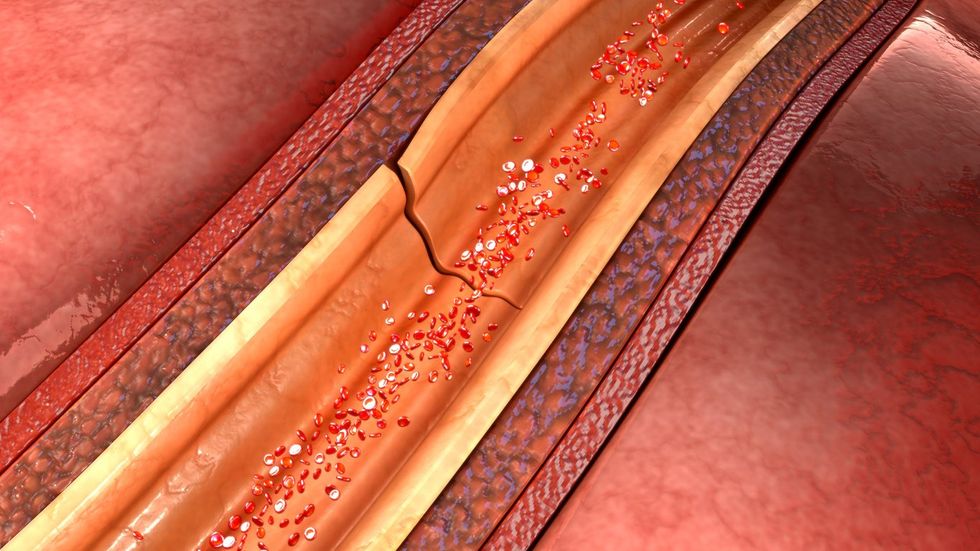Table of Contents

February is American Heart Month.
We can’t stress enough how important heart health is. Well, maybe stress is the wrong word. We can’t say it loud enough: PAY ATTENTION TO YOUR HEART. Heart disease is the leading cause of death for women and people assigned female at birth (AFAB) in the U.S.
But sometimes cardiac events happen regardless of risk factors for heart disease. For example, spontaneous coronary artery dissection (SCAD) is a condition that can cause heart attacks in people without heart disease and is most common in women.
Here’s more on what you need to know about risk factors and treatments for SCAD and the symptoms of heart attacks in women.
Read: FAQs: What Women Need to Know About Cardiovascular Disease >>
What is SCAD?
Spontaneous coronary artery dissection (SCAD) happens when there’s a sudden tear in the wall of a coronary artery. The tear causes blood to get trapped and swell inward which blocks or slows blood to the heart. This lack of blood flow can cause chest pain or a heart attack. And people who experience SCAD once are at high risk of having another tear.
What causes SCAD?
As the name implies, SCAD happens with no warning. But, researchers think there are some common factors that may contribute to SCAD. These can include:
- Genetics
- Inflammation
- Hormone levels
- Artery problems
Living in a physically and/or emotionally stressful environment may also increase the risk of SCAD.
What are the risk factors for SCAD?
Research is ongoing as to what causes SCAD, but SCAD is most common in women and people AFAB. Especially people who’ve just had a baby (postpartum) and in postmenopausal people. Most people who have a SCAD have no risk factors for heart disease.
Some conditions can increase the risk for SCAD. These can include:
- Dangerously high blood pressure
- Substance use disorders
- Hypothyroidism
- Fibromuscular dysplasia
- Inflammatory conditions like lupus and multiple sclerosis
What are the symptoms of SCAD?
The most common symptom of SCAD is chest pain due to the lack of blood flow in the heart.
If you’re experiencing chest pain or other signs of a heart attack, call emergency services right away.
Your healthcare provider will perform tests to check a SCAD. These tests can include:
- Enzyme marker test
- Angiogram imaging
- Intravascular ultrasound
- Optical coherence tomography
Women and SCAD
Although SCAD can happen to anyone at any age, most people with SCAD are women in their 40s and 50s.
SCAD is also the most common cause of heart attacks during pregnancy, although pregnancy-related SCAD makes up a small number of the cases.
Symptoms of a heart attack in women
SCAD can cause heart attacks, and knowing the symptoms of a heart attack can help save your life.
It’s important to note that women and people AFAB can experience signs outside of chest pain and can have different symptoms than men.
Symptoms of heart attacks in women can include:
- Nausea
- Sweating
- Shortness of breath
- Extreme fatigue
- Back pain in the upper back or abdomen
- Pain and/or discomfort in one or both arms
- Pain and/or discomfort in the neck or jaw
- Lightheadedness
Treatment for SCAD
Treatment for SCAD varies depending on the person and how serious the tear is, but most people with SCAD are given medication to control blood pressure and lower cholesterol. People with severe SCAD may need bypass surgery or other urgent surgeries on the heart.
It’s important to note that people who have a SCAD are at high risk of having another incident. You can’t prevent SCAD, but talk to your healthcare provider about ways you can take care of your heart and manage your risk for heart disease.
From Your Site Articles
Related Articles Around the Web


